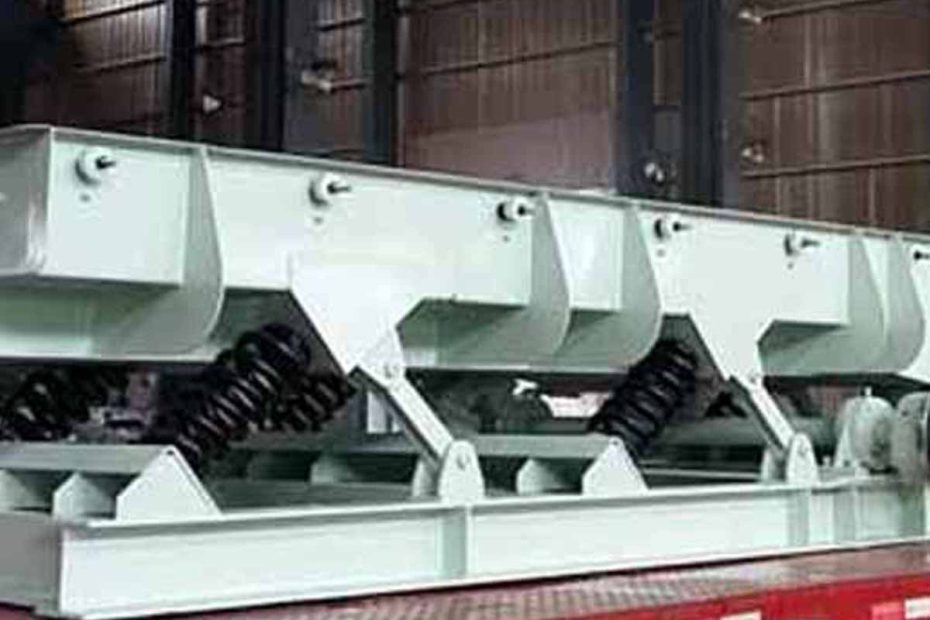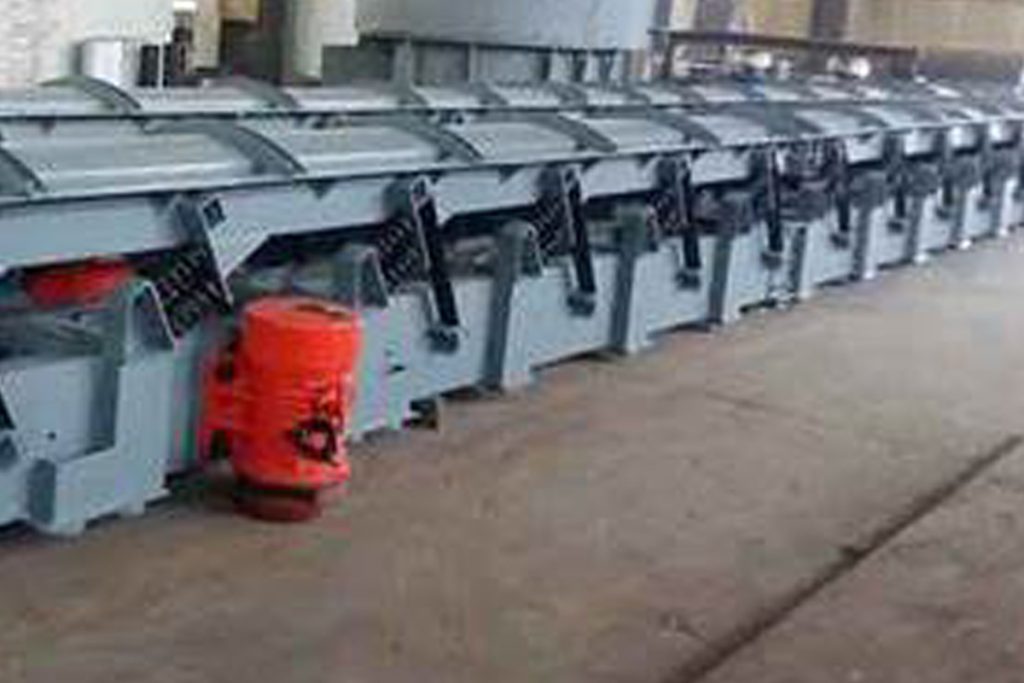Inertial vibrating conveyor is a continuous conveying machine without traction components, mainly composed of load-bearing components, elastic elements and exciters. The vibrating conveyor starts and stops quickly and smoothly, has a long conveying distance, large conveying capacity, low energy consumption, low noise, low wear and tear, and small maintenance workload.
Inertial vibratingn conveyor is a continuous conveying machine that uses an exciter to generate periodic vibrations. It makes the material in the trough slide or throw in a certain direction by vibrating the material trough, thereby realizing the material conveying.
Structural Composition Of Inertial Vibrating Conveyor
Inertial vibrating conveyor is a device that conveys materials through the principle of inertia. It is mainly composed of an electric motor, an eccentric shaft, a conveying trough, etc.
- Conveying trough and balancing chassis: The conveying trough is used to carry materials, and the balancing chassis is used to balance the inertial force of the trough body and reduce the dynamic load transmitted to the foundation.
- Exciter: It is the power source of the vibrating conveyor, which generates a periodically changing exciting force. The types of exciters include mechanical, electromagnetic, hydraulic and pneumatic.
- Main vibrating spring and vibrating isolation spring: The main vibrating spring is used to support the conveying trough so that it has a suitable near-resonance working point, and the vibrating isolation spring is used to reduce vibrating transmission.
Advantages And Characteristics Of Inertial Vibrating Conveyor
- High efficiency: The inertial vibrating conveyor uses inertial force to convey materials and has a high conveying efficiency.
- Smooth operation: There are no moving parts inside, and the motor provides stable power, which makes the conveyor run smoothly and have a long service life.
- Simple structure: The vibrating conveyor is mainly composed of a motor, an eccentric shaft, a conveying trough, etc., with a simple structure, easy to operate and maintain.
- High stability: The vibrating frequency and amplitude are relatively stable, not affected by the external environment, and the material is conveyed evenly.
- Strong applicability: It is suitable for materials of various particle sizes, shapes and weights, and can meet different production process requirements by adjusting the exciter parameters.
- Energy saving and environmental protection: It has a compact structure, low noise, low energy consumption, and meets the requirements of green production.
Conclusion
The inertial vibrating conveyor is an efficient, reliable and adaptable conveying equipment, suitable for conveying various materials in block, granular or powdered form, at normal or high temperature.
Inertial vibrating conveyors can adapt to a variety of industrial environments and are widely used in chemical, building materials, metallurgy, mining, coal, grain, glass, ceramics and other industries.

